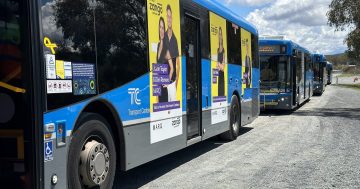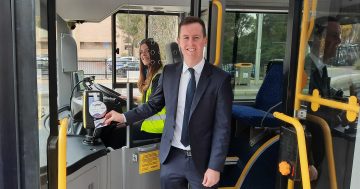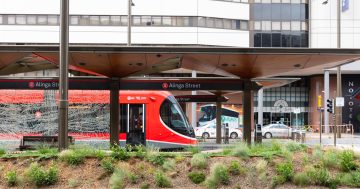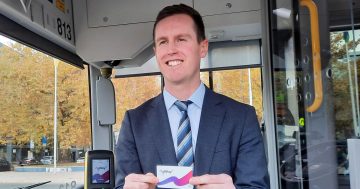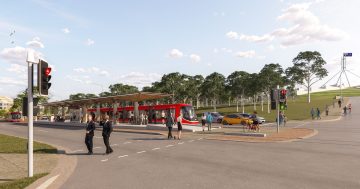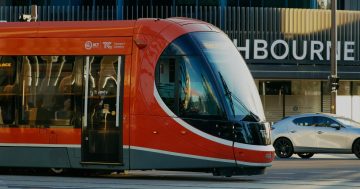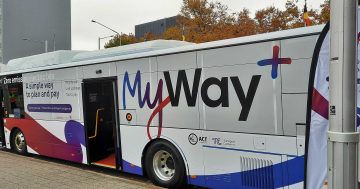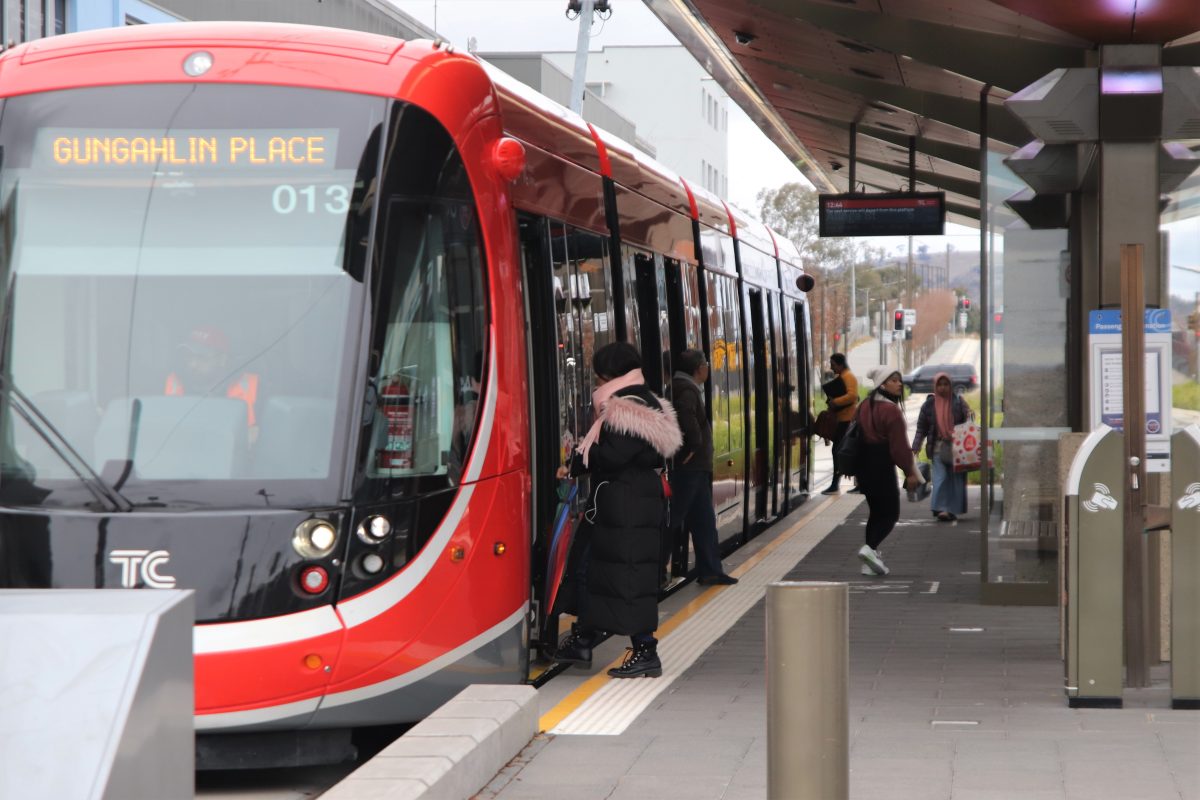
The ACT Government continues to plough money into light rail, but would electric buses have been a better bet? Photo: Region.
When I was a kid growing up in Canberra, we knew that if you wanted to get around by bus, you needed to plan an hour each way for travel, including wait times. And this was from Civic to the inner south. If you wanted to travel further, especially on a weekend, best to expect to spend several hours waiting and commuting either way.
As we got older, we all got our licenses and cars because it was undoubtedly the easiest way to get between university, home and social gatherings. A few mates never got their licences, and they managed by either living within walking distance from work and university (which also meant their bus commute was semi-reasonable) or scabbing lifts from the rest of us, especially at night. Of course, living in the inner suburbs is not possible for the majority of our population and it’s only becoming more unaffordable.
When light rail first came to Canberra, I was cynical about its potential impact on our overarching public transport system. Great if you wanted to drive your car to a light rail stop in Gungahlin and ride into the city, or if you lived between Phillip Ave and Civic, but otherwise, not so helpful. I stand by that initial assessment because I’m yet to be proven wrong and it feels unlikely we’ll see a fully geographically accessible light rail system in Canberra anytime soon.
Add to that the fact that, according to what I can glean through Transport Canberra’s somewhat inaccessible website, the ratio of buses to people in Canberra has actually fallen over the years. Given Canberra is a city planned for the automobile, our public bus network should be ubiquitous, easy to use and on a fast timetable. Instead, our fastest buses are, at best, arriving every 15 minutes on weekdays, 30 minutes on weekends and don’t serve everyone everywhere (ie, outer suburbs to the north or south).
I’ve been travelling these past few weeks and have observed how cities overseas manage public transport to meet the needs of their populations. The biggest thing I notice is that the international systems are focused on serving the actual needs of the community – not the aspirational idea of what our city could or should be like in the minds of policymakers.
The ACT Government’s focus on reducing driving in Canberra and improving the walkability and cycling capacity of the city feels like it’s serving some idealised population who are all capable and willing to invest the extra time to get places, who are able-bodied and who happen to live in the suburbs where this is even possible. But tell that to the older woman living in Richardson with arthritis who can’t drive anymore but would really like to be able to catch a bus to the city without having to bank hours of energy to get there and back unassisted.
The fact is, the roads remain the best way for Canberrans to get places. And as our lifestyles become busier and our expectations of convenience grow higher, the likelihood that we’ll happily wait half an hour for a bus or swap between buses and light rail to undertake our day-to-day activities when we could hop in the car and be there in 20 minutes, is slim.
Having spent the last several weeks happily catching buses, trains and walking places in other cities, I know that, like many other Canberrans, I would happily eschew the car to hop on a bus if it was accessible, timely and well-maintained.
I don’t enjoy driving or parking. Public transport is my preferred method of travel, and I fully support the transition to an electric bus fleet, which, frankly, I feel should have been the focus of investment over the light rail in the first place.
But do I expect to make that switch from car to bus for the majority of my transport in this lifetime? Not in Canberra, no.












